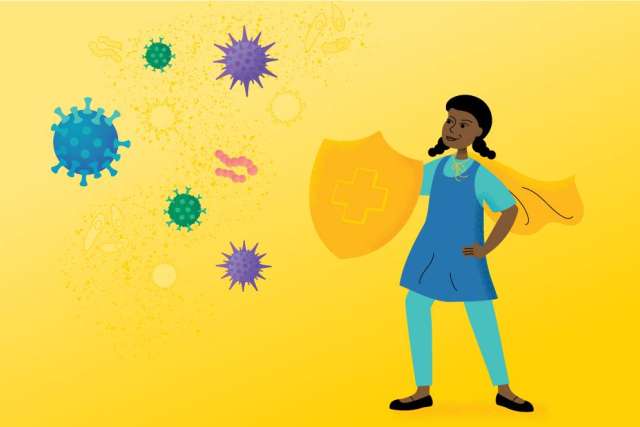While children age 6 months and older are now eligible to be vaccinated against COVID-19, the shot isn’t mandatory for the 2022-2023 school year. But the California Department of Public Health does require children be vaccinated against nine other diseases to attend public or private school in the state — mandates that have been in place for decades.
“By the time a child is in school, they’ve received many of these vaccines already,” says Deborah Lehman, MD, a pediatrician with UCLA Health.
Most children in the U.S. receive immunizations in their first two years of life according to a schedule endorsed by the U.S. Centers for Disease Control and Prevention and the American Academy of Pediatrics. These vaccines induce protection against polio, hepatitis B, diphtheria, tetanus, pertussis, measles, mumps, rubella and chicken pox.
The preteen years bring additional vaccine requirements. Students entering seventh grade need a tetanus, diphtheria and pertussis booster. Pediatricians also recommend the HPV and meningococcal vaccines for children this age, though these shots aren’t required for school attendance.
“California has a law that there are no exemptions to vaccines except for medical reasons, which are very rare,” Dr. Lehman says. “So a parent, in order to enroll their child in school — that would be public or independent school — needs to have their child fully vaccinated per California vaccine requirements, unless they have a medical contraindication to a vaccine.”
Children’s vaccination rates may have dropped during the pandemic. Many people who stayed home skipped annual doctor appointments.
“During the 2020-2021 school year, vaccination coverage among kindergarteners nationwide was lower than the previous year,” Dr. Lehman says. “And fewer children actually entered kindergarten during the pandemic because they didn't leave home. So, it's likely that pandemic -related disruptions really impacted vaccination coverage.”
Pediatricians are concerned, she says, because some diseases, such as measles, “need a very high level of community coverage to make sure that we don't see circulation of these diseases.”
Why vaccines for old diseases are still needed
Many of the diseases standard childhood vaccines protect against — including polio, tetanus and diphtheria -- are not seen or rarely seen, which could lead parents to believe inoculations are no longer needed.
“It's easy to be swayed that you don't necessarily need these vaccines if you think that (these illnesses) don’t pose a risk,” Dr. Lehman says. “The problem is that these diseases can come back at any time, as demonstrated by the measles outbreaks that we've had in the last five to six years. All it takes is one unvaccinated child with measles and that virus will find the next unvaccinated person nearby.”
Polio was considered eradicated in the U.S., but a case was identified in July in an unvaccinated individual in New York.
While the majority of parents keep their children’s vaccines current, vaccine hesitancy has grown in recent years, Dr. Lehman says, as illustrated by the divisions and misinformation around the COVID-19 vaccines.
“We encourage families to talk to their health care providers, their pediatrician or family doctor,” she says, “to find out about the real benefits to vaccines, and then the real risks to vaccines, which are minimal compared to the risk of not being vaccinated.”
To find out more about childhood vaccines, visit UCLA Health Pediatric Care.
Back to school:
Tips to help younger students have a successful first week
Threats of shootings, COVID-19 add to mental health challenges
Transitioning back to in-person interactions
Back to school: How much should parents worry about long COVID in kids?
With COVID-19 still raging, advice for parents on navigating back-to-school
